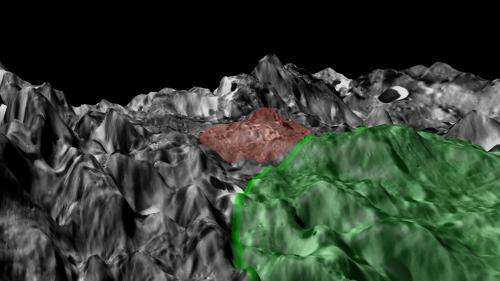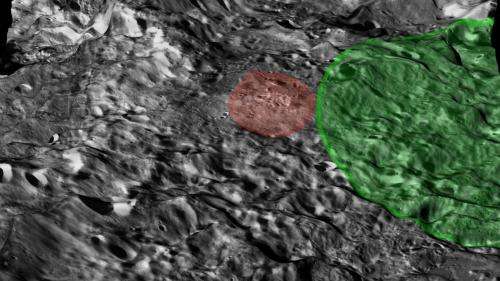Extent of Moon's giant volcanic eruption is revealed

Scientists have produced a new map of the Moon's most unusual volcano showing that its explosive eruption spread debris over an area much greater than previously thought.
A team of astronomers and geologists, led by experts in the Institute for Computational Cosmology and Department of Earth Sciences at Durham University, UK, studied an area of the lunar surface in the Compton-Belkovich Volcanic Complex.
By mapping the radioactive element thorium which spewed out during the eruption they discovered that, with the help of the Moon's low gravity, debris from the unnamed volcano was able to cover an area the size of Scotland, or around 70,000km2.
The eruption, which happened 3.5 billion years ago, threw rock five times further than the pyroclastic flow of molten rock and hot gases that buried the Roman city of Pompeii, the researchers added.
The findings are being presented by lead author and Durham University PhD student Jack Wilson to the 46th Lunar and Planetary Science Conference in Texas tomorrow (Thursday, March 19, 2015).
The research used data from NASA's Lunar Prospector spacecraft which first spotted the volcanic site in 1999 when it detected an isolated deposit of thorium on the Moon's far-side between the Compton and Belkovich impact craters.

Since its discovery, the deposit had been hard to study because it is hidden beneath debris from meteorite impacts, but Lunar Prospector did detect gamma rays emitted by the thorium that can pass through up to a metre of rock.
Based on this information, the Durham-led team used a "pixon" image enhancement technique, originally designed to peer into the distant Universe, to sharpen the map and reveal the enormous size of the thorium deposit from the volcanic eruption.
Jack Wilson, a PhD student in Durham's Institute for Computational Cosmology, said he was surprised by the gigantic scale of the explosion.
He said: "Volcanoes were common in the early life of the Moon and in fact the dark 'seas' you can observe on the lunar surface were created by runny, iron-rich, lava that flooded large areas, filling in impact craters and low-lying ground.
"Eruption of viscous, light-coloured, iron-poor, lava, which creates steep-sided volcanic cones, was rare and observed only at a handful of sites such as this one. The explosive eruption of such lava is unknown elsewhere on the Moon, making this volcano unique.
"By mapping the radioactive content of the lava from this volcano we have been able to show that molten, radioactive rock was thrown far beyond the slopes of the volcano, reaching several hundred miles in one direction."
The research team is now planning to apply its mapping technique to the largest known volcano in the Solar system, Olympus Mons on Mars.
Rather than the radioactive element thorium, the researchers will be looking for hydrogen and the possible remnants of water ice from glaciers on the high slopes of the Red Planet.
The latest research used the DiRAC Data Centric system at Durham University, part of the DiRAC national supercomputing facility for research in astrophysics and particle physics funded by the Department for Business, Innovation and Skills through the Science and Technology Facilities Council and was supported by the Science and Technology Facilities Council and The Royal Society.
More information: Evidence for explosive silicic volcanism on the Moon from the extended distribution of thorium near the Compton-Belkovich Volcanic Complex, Wilson JT, et al www.hou.usra.edu/meetings/lpsc2015/pdf/2081.pdf
Provided by Durham University




















